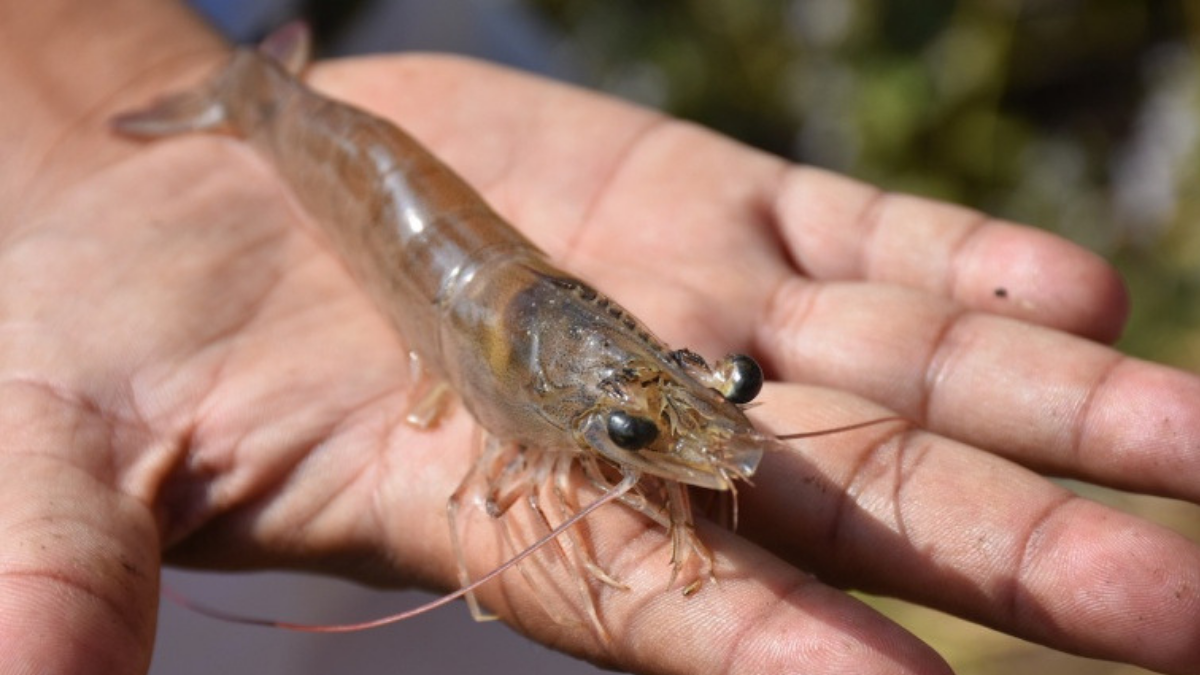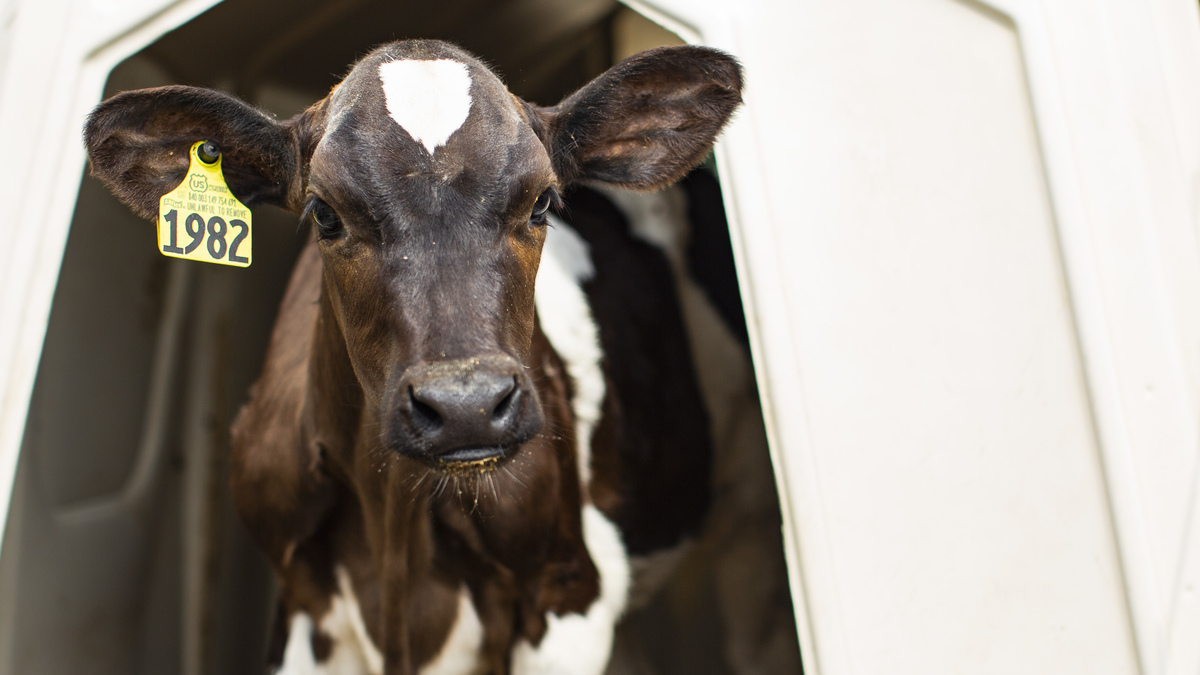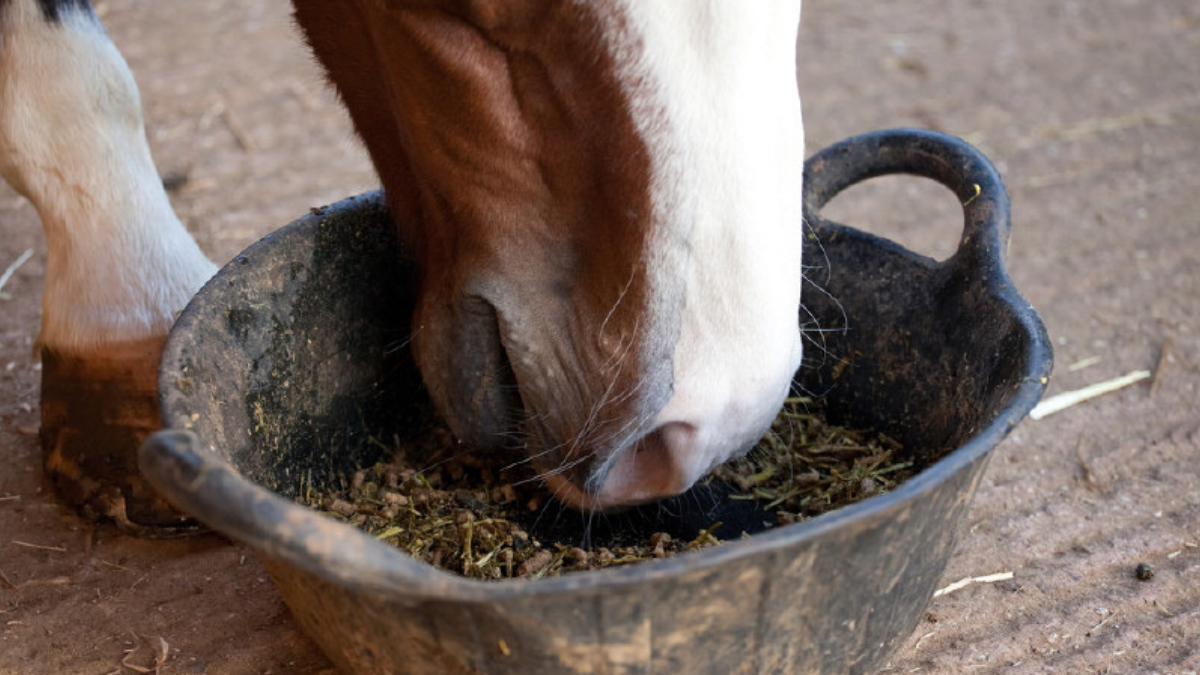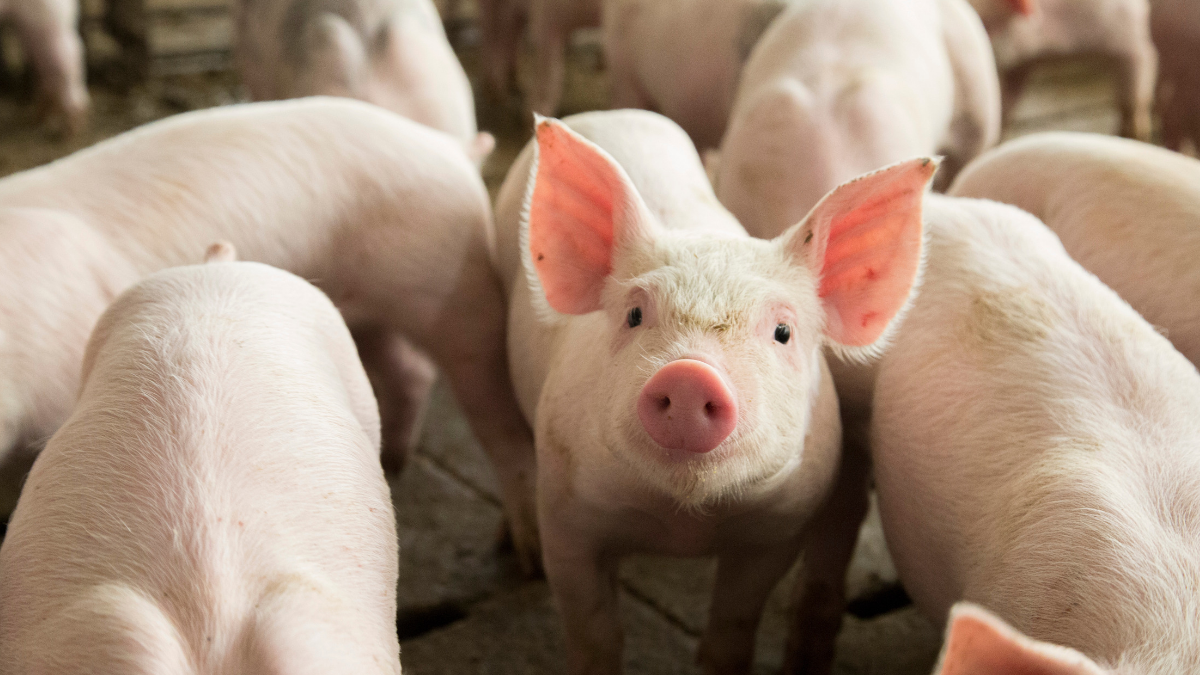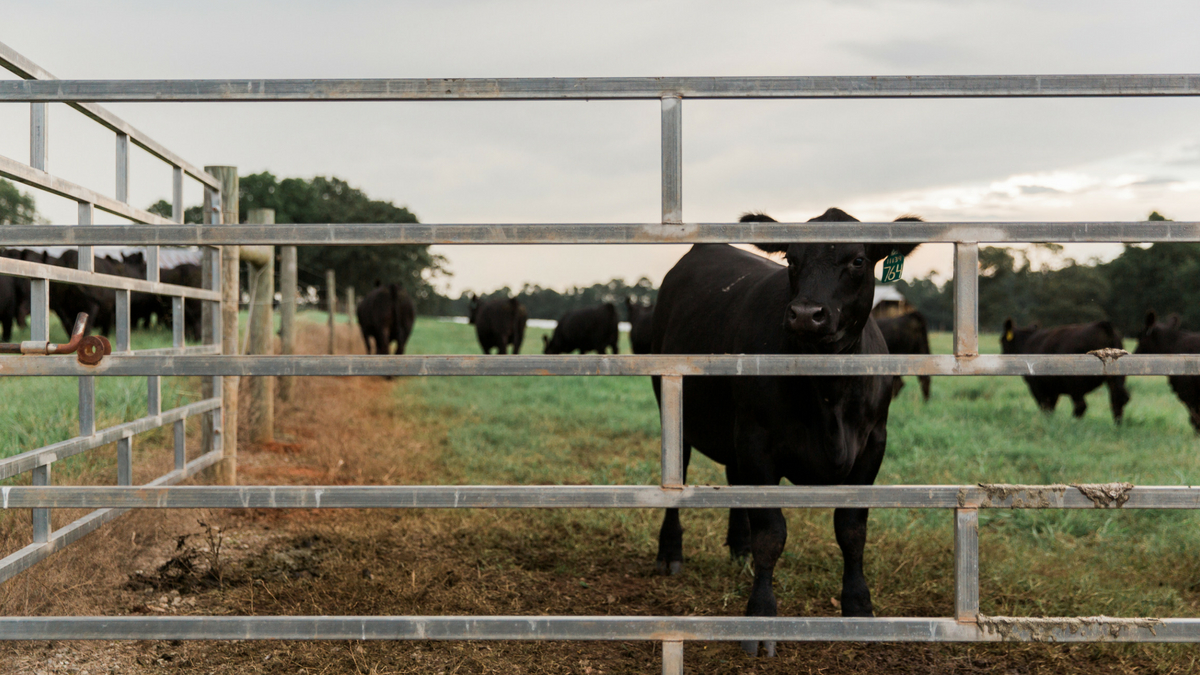Since man hunted and got a taste for the meat of the Auroch, later domesticated into the ancestors of modern cattle breeds, the market for beef has grown steadily. The last 10 years, however, have not been so kind, with plummeting beef consumption and higher prices. There is some light, as meat intense diets like paleo and keto have turned some consumers back to beef, but just at the moment when the cattle industry has become more consolidated, sophisticated and consumer-focused, it is ironically facing some of the greatest existential threats to its 10,000-year existence.
There are three new primary threats to the beef industry:
1. Lab-grown meat
Touted as sustainable and welfare-friendly or, conversely, dismissed as “fake meat,” the clear intent of growing meat in petri dishes is to displace the consumption of meat from beef cattle. Despite concerns about just how “friendly” the technology really is, meat producers — such as Cargill and Tyson — have invested in startups in this market.
2. Environmentalism
Environmentalists advocating for ““Meatless Mondays’ and other initiatives at the consumer level have been unremitting in their attacks on the meat industry. These action groups have sometimes used dubious data to support their contention that cattle — specifically, beef — use more water and more resources and emit more greenhouse gases than other protein options. Their relentless attack appears to be having an effect on red meat consumption in the U.S. and Europe.
3. Other meats
Chicken consumption continues to grow at 2 percent per year. Not only is it cheaply priced, neutral in flavor, easy to cook and unrestricted by religious constraints, it is also predicted to become the world’s favorite meat, taking the place of pork at number one. At the same time, fish has been positioned at the premium end of the market, touting human health benefits such as DHA and Omega-3. Both meats are stealing market share from beef.
The resulting trend from this triple threat is clear: beef consumption has stagnated for the last ten years and, despite projections for growth in markets like China, new ways of thinking will be required.
So how to respond?
Can we manage the individual animal to maximize performance? Cattle are still one of the most efficient means of converting grasses and fiber into food. Can we learn to preserve natural resources and invest in sustainable decisions that boost soil health? How can technology help us better manage pastures and forage production better?
What about the consumer? Can we improve the product — and, thereby, improve the experience — to create more consistent flavors, cooking and dining while also meeting their questions about welfare and the environment?
More than most other protein-producing industries, beef production needs an injection of new ideas and technologies. Smart precision farming requires digital technologies to develop better management practices, accuracy and methods. Using an eight-technology framework can help us understand the opportunities for improvement that the industry must embrace in order to rise to this triple threat.
1. Sensors
Through the use of sensors, cattle producers are capable of tracking virtually anything within their herd. They are expected to monitor an animal’s health and comfort, which can prove costly and time-consuming if done manually. With the implementation of wearable sensors, such as collar, ear or leg tags, ranchers are able to detect diseases and monitor everything more efficiently, from rumination to general animal health.
For example, several companies offer calving sensors that notify the farmer when a cow is expected to give birth. Moocall’s calving sensor does this by monitoring tail movement patterns triggered by labor contractions. When the tail movement patterns reach a certain level of intensity, the Moocall sensor sends a text message to the farmer’s cell phone. JMB North America offers a sensor that alerts farmers when a cow’s water breaks. Other calving sensor options include the AfiAct 11 Leg Tag, Cow Call, and Vel’Phone. This technology can greatly improve calf survivability and allows farmers to be more effective in their time and energy efficiency.
The University of Calgary is testing how accelerometers can be used to detect diseases within a beef cattle herd. The accelerometers are attached to the identification tags in the cow’s ears, because the movement in this area can show how much time is being spent eating, chewing cud, moving and resting. CowManager, a temperature sensor, also records movement related to eating, ruminating, walking and estrus activity. Similar sensors include TekVet, FeverTag Quantified Ag Allflex, and Precision Animal Solutions. These clips can measure changes in body temperature to help detect illness, reducing the chances of further infection to other cattle and significantly lowering costs while simultaneously increasing animal welfare.
Craig Carter, the director of the University of Kentucky’s Veterinarian Diagnostic Lab, has performed research on an algorithm that can differentiate healthy from sick cattle and will generate alerts when specific animals need to be treated. Micro Technologies AmerisourceBergen has partnered with the Geissler Corporation to market, install and service the Whisper* Digital Stethoscope, the first tool developed to score severity of bovine respiratory disease (BRD) in cattle.
Vital Herd’s e-pill sensor is ingested by the cow and sits in the rumen, where it collects data on body temperature, heart rate, respiration rate, pH levels and other parameters. Another rumen bolus sensor, Moow, can measure CO2 and NH3 concentration, temperature levels and pH balances for up to three years, and all data is sent to local or cloud storage. Other rumen acidosis sensors include eBolus and VetAsyst.
Heat detection in beef breeding can be crucial, and sensors like Heatime HR LD, Heatime Pro, Qwes HR-LD, RumiWatch, SenseTime Beef, and Cow Scout help to accurately identify the best insemination time. Each of these also watches changes in rumination patterns to try and catch potential health problems.
Locating specific animals has been made easy with CowView and Smartbow. These neck and ear sensors localize every cow in real time to easily find which ones need to be checked, inseminated, treated or moved.
The GrowSafe platform uses biometric sensors and data sources to continuously track and monitor sick and poorly performing animals. It also can measure an individual animal’s gain and current market value, which helps maximize profits.
Vence, a virtual fence system, can eliminate the cost of traditional fencing and make it simple to rotate cattle and keep them within specific boundaries through the use of a neck collar. Animals learn to avoid certain areas by receiving low voltage shocks or uncomfortable sounds.
ClicRTechnologies has also made strides in the beef industry by creating the ClicRweight system, which replaces the traditional gravity weighing system. This new scanning station system is placed where the animal would normally eat and can gather statistics quickly and accurately on each animal as it steps on to the scale without any human intervention, thereby reducing costs and allowing for better analysis.
On the consumer side, food safety is of growing concern. When the quality and freshness of hamburger meat is in question, it is often tossed out, simply because people don’t want to take the risk. Safe Food Scientific has developed a biometric sensor that allows consumers to know if the beef in their fridges is safe to eat. Different forms of bacteria in beef reproduce in different conditions; access to nutrients, water and temperature can all affect how and the rate at which bacteria grow. Beef-Fresh Check tabs use biosensors to detect bacterial contaminants and help consumers determine if meat is safe to eat.
2. Drones
These small aircraft are finding more uses in the cattle industry by allowing producers to easily manage feedlots and ranches. Farmers are using drones to check fence lines, spot holes or pockets that might need to be fixed and check water troughs and gates in remote locations through aerial images and video. Some models can run on their own after being flown through the route just one time, like the DJI Mavic Air, DJI Mavic Pro, and Phantom 4 Pro. After manually showing the drone where to fly, it will subsequently follow the same path for routine checks without extra assistance.
When measuring pastures, the traditional strategies include use plate meters, pasture probes and tow-behind devices, but cameras on drones are becoming capable of performing the same task. Ranchers can also estimate the amounts of feed on-farm, particularly where there are areas of different growth.
The wireless camera can assist with precision livestock by notifying a beef producer that a cow has calved or when locating a lost animal. Thermal cameras like the DJI Zenmuse XT can distinguish cows from other heat sources and spot animals underneath canopies or trees. Other popular drones used for scouting cattle include the Honeycomb Agdrone, DJI Matrice 100, DJI T600 Inspire 1, DJI Phantom 3 Advanced, eBee SQ drone and the Lancaster Hawkeye Mark 111.
Looking ahead, drones may eventually become advanced enough to be able to spray pest deterrents directly onto herds, instead of farmers needing to manually spray by hand. From a teaching perspective, drones can be used to instruct veterinary students and ranchers how to move livestock using low-stress handling techniques.
3. Robots
On a beef operation, robots can perform small, common tasks, such as daily feeding. Hanson Silo Company has partnered with Trioliet to manufacture just such a robotic feeding system. This self-automated robot will fill itself with feed and mix and deliver the food to animals in the barn. As long as the feed bins are kept full, the robot can run on its own and feed about 700 head of cattle up to 12 times a day. Additional feeding times are even better for the animal, since it ruminates better when eating more frequently. Other companies that produce automated feeding robots include Rovibec, KUHN System TKS, TKS Agri, Lucas G, Jeantil, Valmetal, Wasserbauer, Pellon, WIC System and Hetwin.
The Swagbot is a robot that can move groups of cattle, tow heavy trailers and navigate around ditches, waterways and other rugged terrain. The University of Australia is trying to teach this robot to identify sick or ill animals by fitting it with temperature and motion sensors.
One of the largest meat-packing plants in the world, JBS, has invested in Scott Technology, a New Zealand-based robotics firm. The meatpacking company is looking at ways to possibly incorporate automated machines as they attempt to turn a whole cow into certain cuts, like steaks and roasts. Even though these robots can use visual technology to cut into a carcass, a beef carcass requires the robot to feel instead of seeing — that is, it must be able to feel how deep a bone is to remove certain cuts of meat. This type of skilled cutting hasn’t been mastered by a robot yet, but investments are being made to meet this goal.
4. 3D Printing
A new world of food processing is becoming a reality with 3D printing, and a lot of research is being done by Meat and Livestock Australia (MLA). This technology allows for the opportunity to use low-value meat cuts to create new types of food. According to MLA, at least one-third of each carcass ends up as hamburger trimmings for fast food chains. This new technology would give typically lower valued meats, such as offal, a new avenue for consumption, thereby creating a new opportunity to increase value for each carcass. This could potentially put more money in the pockets of farmers and ranchers.
Where else are 3D printers making their way into consumer lives? Nursing homes! Because printed beef is easy to chew and swallow, Germany has incorporated 3D printers in 1,000 nursing homes and is considered more appetizing than the pureed food that was previously served.
5. Blockchain
Now, more than ever, consumers are demanding complete transparency when it comes to purchasing meat products. Lack of knowledge about origin and concern over foodborne illness has left 75 percent of consumers distrustful of food labels, according to a study by Label Insights. Blockchain could be used to restore consumer confidence through its ability to trace products along the entire supply chain, from the producer to feedlot, feedlot to processor, processor to wholesaler and wholesaler to retailer.
Grass Roots Farmers’ Cooperative were the first suppliers in the U.S. to use this technology. Their products now contain a QR code that can be scanned to see a “digital history” of where the beef came from and how the animals were raised. This information includes stories from the farmer and butcher who contributed to the final product now in stores. In China, InterAgri uses blockchain to allow consumers to trace the cow’s breed, when it was slaughtered and what bacteria testing it went through.
Wyoming beef producers have combined efforts to create BeefChain, which allows consumers to have pasture-to-table traceability. Each animal receives an RFID tag that is linked via blockchain, and the assigned number follows the animal throughout the production process. Consumers can help shape this service online by submitting areas of interest or specific questions they have about the process. The organization promises to send information and to adapt its service to meet future interest.
6. Artificial Intelligence (AI)
Livestock producers are now faced with the challenge of growing animals to conditions that match market and consumer specifications and timing. Even ranchers who have been working with cattle for generations can struggle to predict an animal’s yield potential prior to sale. However, AI technologies can be used to accurately predict an individual animal’s potential, as well as fat content, at any point in time by using cameras to analyze the herd.
Researchers at the University of Technology Sydney (UTS) have developed this technology by using off-the-shelf cameras on purebred Angus cattle farms. These cameras operate at 30 frames per second and can capture contours that reflect fat and muscle depth and size. That information is then converted to 3D images that are processed through artificial intelligence algorithms to provide an accurate condition score for each animal. Different shapes, such as muscling, are given a mathematical description and assigned a value, which can then be used to estimate a cow’s condition based on the 3D shape the machine “sees.” This type of technology allows farmers to see, at any given point, where each individual animal is in terms of maturity and can select animals with superior measured traits for breeding the next generation. When a rancher can make decisions based on high-quality, real-time information in low-stress environments, they will see better quality beef product — and results that match consumer preferences.
Cainthus has developed algorithms for facial recognition of dairy cows to monitor the cow’s activity. This technology is also being developed for beef cattle, to replace of tracking devices, and this software may eliminate the need for wearables altogether, particularly for animals raised indoors. Using cameras stationed throughout the feedlot, the software alerts farmers when their cows show early signs of lameness. Cainthus’ goal is to have “machine vision,” allowing AI to supplant many sensor systems.
Not only are ranchers trying to meet market specifications, they are also are constantly trying to manage their large herds effectively. Cattle Watch has developed a remote monitoring system by using AI, deep learning and mass data algorithms to monitor large cattle herds on a wide spectrum. This system can prevent animal theft through GPS satellite tracking and can use geofencing to stop animals from straying outside of the designated lot. It also has an automated animal-counting technology that can count large herds of cattle in a short amount of time and can also monitor the health of each individual cow.
7. Augmented Reality (AR)
The cattle industry is now attempting to mix the real world with the virtual world by using only a pair of glasses or a cell phone. AR displays a virtual image on top of what can be see naturally through the viewer (i.e. reality) in real time, allowing new insights to come to light. Farm VR has created a farming technology that projects images of 3D objects from architectural drawings. If ranchers are interested in buying cattle lots, they can use VR to project renderings of their future lot on top of the lot as it currently looks, allowing them to see what their new lot would look like before actually building it.
University classrooms are even using projected images to teach bovine anatomy. For instance, Harper Adams allows users to take a full look at an intact cow — including its skeleton, blood flow and the udder, in detail — by looking through the Bovine HoloLens. Students are then able to perform dissections of the udder, since they now know what to expect and can similarly walk their classmates through the process to help them learn the same procedure.
8. Virtual Reality (VR)
Virtual reality is fairly similar to augmented reality because it also is a 3D, computer-generated environment. When using a VR headset, these environments move as you move, and the images appear life-size to each individual. Saskatchewan Cattlemen’s Association is using virtual reality technology to demonstrate life on a farm to the public. People don’t have to physically be on the farm to hear and see from a producer how they take care of their animals and what the animals’ life cycles are, giving producers a new way to engage and educate their consumers. Not only does this address common misconceptions, it also allows consumers to directly relate to the farmer. LiveCorp also offers a similar opportunity for consumers to experience the transportation side of an animal’s life, as their technology takes the user visually from a quarantine facility to a loading vessel. These efforts have all been made with the intent of improving consumers’ understanding of how the production process works.
Pre-sale auction inspection is also set to enter the virtual reality realm, with Elders preparing to become one of the first livestock agencies to offer 360-degree selling to customers. (Check out the video.) Partnering with Tim Gentle has allowed Elders to record 360-degree picture and video experiences so that potential buyers can view animals at all possible angles. Viewers can move the environment in any direction desired when looking through the VR headset. Buyers can project auctions from any desktop or phone through the headset and view auctions in their own living room.
The Internet of Things (IOT)
All eight of these technologies have the capability to work together through the Internet of Things (IOT) — or “internet of cows,” as it has been called in this case. It is IOT that connects sensors, drones, robots and the like to computers and iPhones for data analysis and interpretation. Sensors — such as MOOnitor, a cattle monitoring system that measures and collects daily activity as well as estrus cycles — uses IOT to transfer data and keep real-time information at the fingertips of the farmer or rancher. Because the health of a beef cow directly affects the number of weaned calves each season, a technology such as this, with the ability to detect both sickness and estrus in cows, can improve calf yields, an important metric for beef producers. MOOnitor suggests that it can potentially increase a herd’s calving rate by 30 percent.
A similar IOT system, BovControl, uses a cow’s information — including its birth date, medication, vaccinations and weight — to determine when it is ready to be sold. Farmers can also track an animal’s temperature or location through an ear tag or smart collar.
AgriWebb is an app that can be used on your phone or tablet to track and keep up with all farm records, whether you are walking around your farm or are further from home. At any given time, a farmer has access to feed inventory, financial reports, grazing movements, task management options, individual animal data and biosecurity plans, allowing for better compliance with external certification and monitoring organizations.
KEENAN InTouch provides the farmer with constant herd performance advice and information by way of data collection and analysis. Through this system, a team of nutritionists is available to assist farmers with herd health management, ration formulation, weight gains/yield and costs, with the goal of helping improve cash flow. This technology allows producers to monitor and control all feed usage and waste, which helps control costs and feed budgets and can speed up finishing times for cattle.
The nutrigenomics piece
The last piece of the puzzle is nutrigenomics, the study of nutrition in the genome. It has been determined that, just like for humans, what a cow eats directly affects its microbiome and, therefore, its growth and productivity. Previously, it was believed that cattle should be fed minerals and supplements freely. But, at Alltech, we have seen that supplementing animals with specific levels of nutrients at specific times encourages the body to use those nutrients more efficiently. Those nutrients should come in the form of organic trace minerals and not just any mineral or supplement combination. A targeted nutritional approach such as EPNIX® should be implemented to truly get the most out of production cattle.
The cost/benefit conundrum
These technologies can allow producers to maximize their management practices, increase productivity and efficiency and remain competitive. Interestingly, these benefits will also act as answers to prosumer concerns about such issues as animal welfare, environmental footprint and consistency of the final product.
Can beef farming become “smart”? By measuring feed and water intake in real time and comparing it with the productivity of the animal, we can gain new insights. We can only manage what we can measure, and as such, beef producers should embrace technology to take advantage of genomic advances and use data to access the potential that is unlocked with a better understanding of the animal genome. Big data says a lot, but individual data tells a whole other story.
Producers evaluating these eight technologies may struggle to identify which ones to use and how to invest for greatest return. Clearly, the prices for all of these vary, as will the benefits based on the particulars of a beef operation.
Generally, in beef, sensors are the most likely to offer clear and immediate cost benefits. Machine vision is the most exciting technology and promises a lot. Blockchain might eventually do this as well, but the technology is still being rolled out; augmented and virtual reality aren’t there yet either. The cost-benefits that producers need to evaluate are the fixed cost investment (what equipment is required) and, then, the variable cost (what ongoing costs are required to run the system). I always recommend that producers or farmers evaluate technology by scrutinizing one feature or benefit of particular value to their production and, subsequently, making their purchasing decision based on that one criteria. Traditionally, we look for a 3:1 return, but the transformative nature of these technologies might allow purchasing even at lower initial returns.
On a final note, if you ask ag-tech companies what question they fear most, they’ll tell you it is, “Please give me the name and phone number of a successful customer using your technology.” Tremendous technology is emerging within the beef industry, but some tech is further along the “tried-and-tested” path than others.
I want to learn more about technology for my beef cattle.
